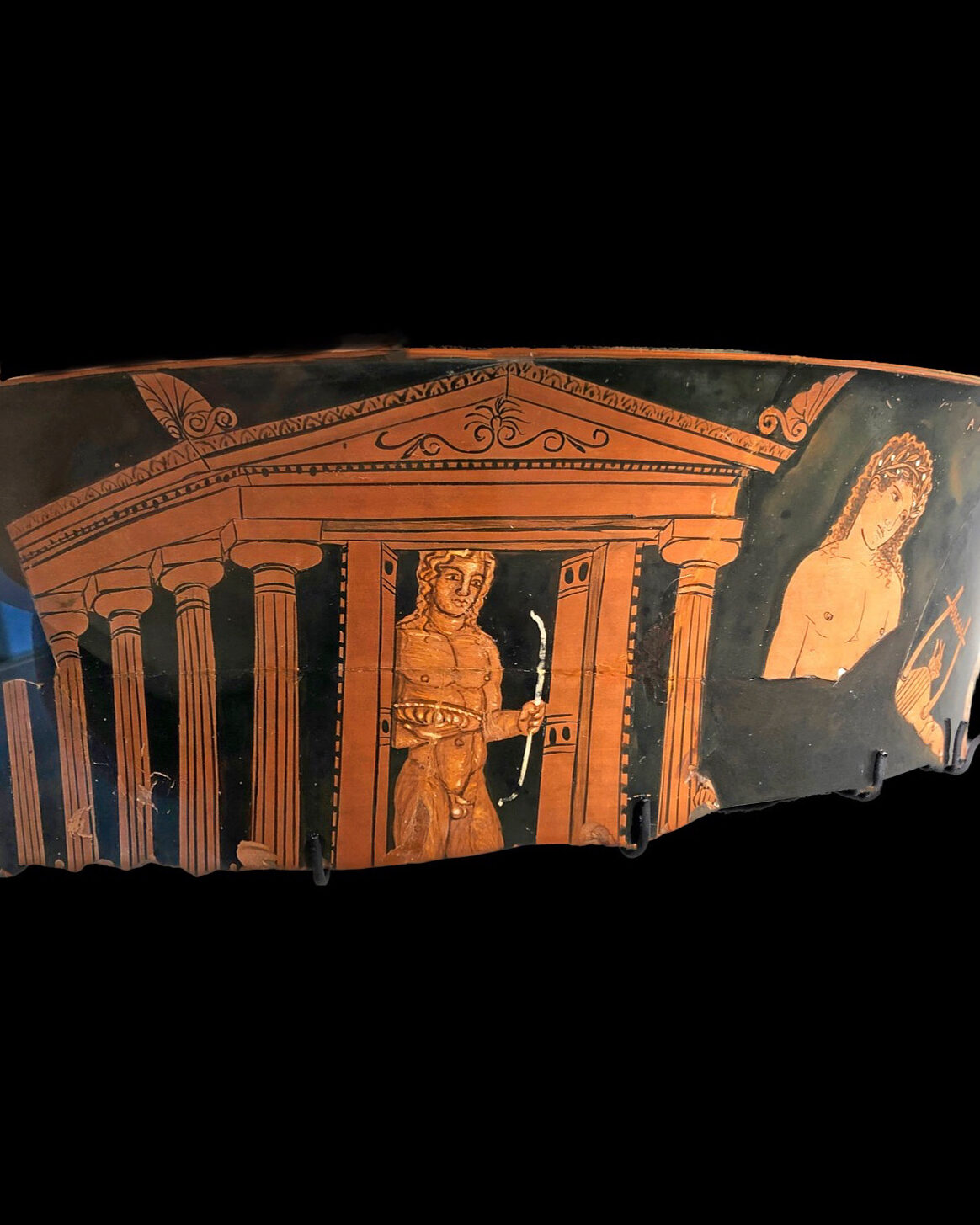This is an unusual and very clever south Italian vase fragment now in the Allard Pierson Museum. Not only has the artist rendered an ingenious cutaway, perspectival view of a temple, he has also shown the god Apollo surveying it and his own cult statue in a rather ambivalent manner…
The fragment belonged to a massive calyx krater (a vase for mixing wine and water) produced and found in Taranto (in Puglia, Southern Italy). I wrote in a previous post about the temple-mad Greeks in those regions, and one of their many temples is brilliantly shown here with all the right details: Doric column capitals, lateral acroteria, and a decorated pediment. But the painter has opened the heavy front doors wide open and done away with the solid walls that would have been behind the colonnade, enabling the viewer to get a peak inside.

And what a sight we are greeted with! Temples were temporal homes for specific gods, and symbolically contained cult statues of them. An enormous statue of standing Apollo (too tall to exit without stooping) holding a phiale and bow is shown within, evidently in polished bronze (rendered by the painter in evocative dilute glaze), and in a stiff style that would have seemed immediately archaic by the 4th century B.C. Temples would only rarely have been open to the ‘hoi polloi’, if at all, so glimpsing that awe-inspiring cult statue would not have been a normal occurrence.
To the right of the temple, Apollo himself has descended from the heavens, lugubriously strumming his lyre. His head is turned away from his temple, and that slight scowl gives the impression that he is not necessarily delighted to be compared one-to-one with the resplendent image within…



